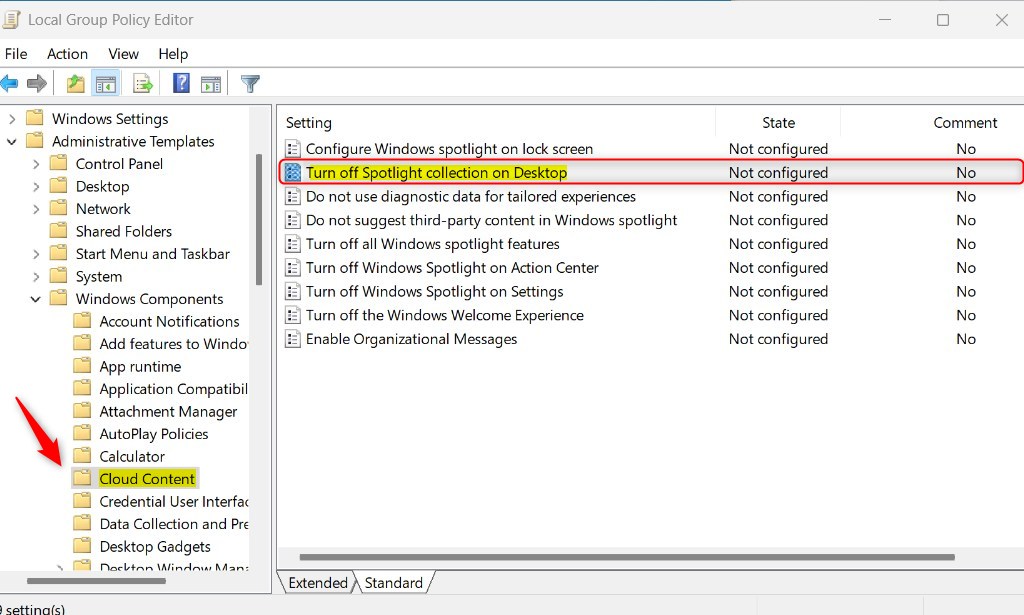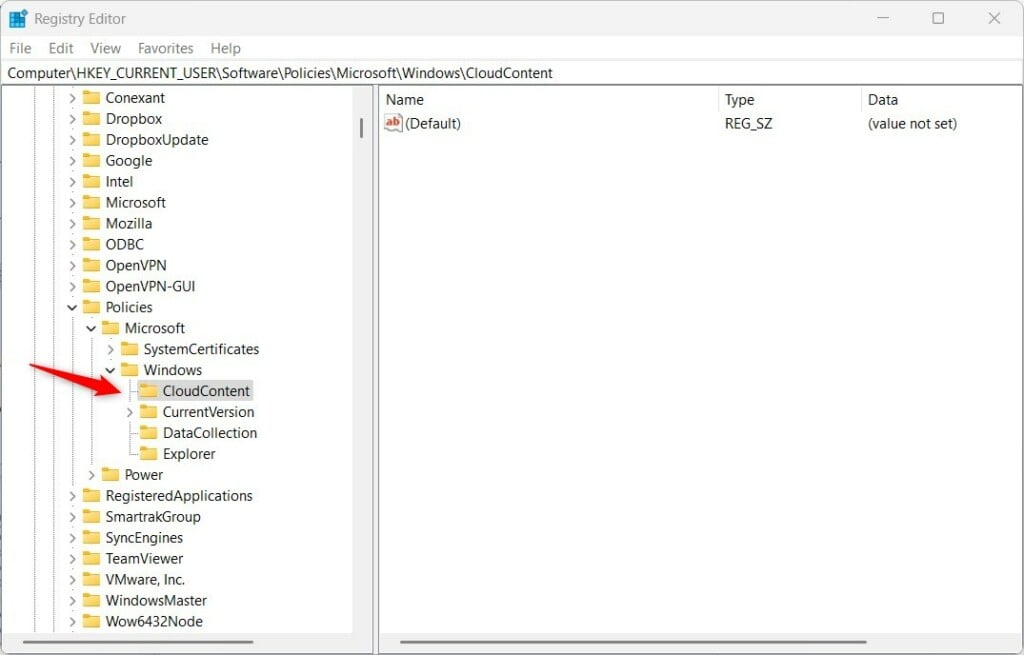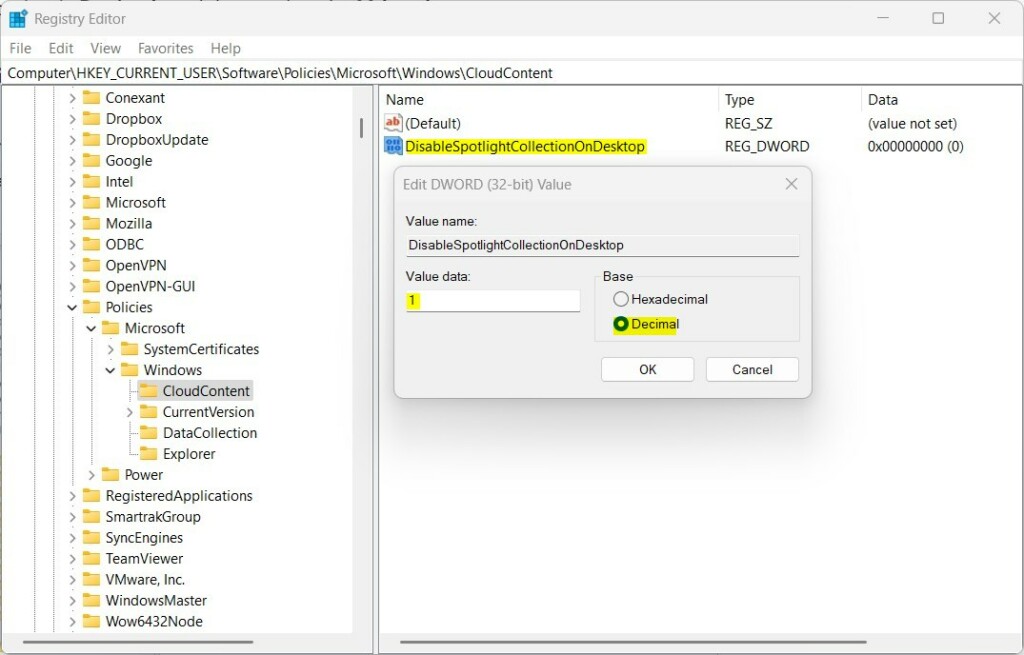This article explains how to enable or disable the Windows Spotlight collection on the Desktop in Windows 11.
Windows Spotlight lets users set up their desktop background and lock screen to automatically connect to Microsoft servers to discover and download random images worldwide.
The Windows Spotlight feature is automatically added in Windows, allowing users to set their desktop background with Spotlight collections, save Spotlight images for use, and more.
If you do not want your users using Windows Spotlight collections, you can disable it in Windows. If it is disabled and you want to use it, enable it using the steps below.
Enabling or disabling the Windows Spotlight feature can be useful for various reasons. For instance, some users prefer using their images as their desktop background or lock screen, while others may be concerned about the data sent to Microsoft’s servers.
Disabling Windows Spotlight can also help to conserve system resources and improve overall performance. On the other hand, enabling Windows Spotlight can provide users with a fresh and dynamic desktop experience with various high-quality images from around the world.
Enable or disable Windows Spotlight collections on the Desktop
As mentioned above, users can enable or disable Windows Spotlight using the group policy editor or Windows Registry.
When disabled, Spotlight collections can not be used on the desktop. You can re-enable to use it.
Here’s how to do it.
First, open the Local Group Policy Editor.
Then expand the following folders: User Configuration -> Administrative Templates -> Windows Components -> Cloud Content.
User Configuration -> Administrative Templates -> Windows Components -> Cloud Content
Next, click on the Cloud Content folder on the left panel, and double-click the setting on the right called “Turn off Spotlight collection on Desktop” to open.

When the setting window opens, select one of the options:
- Not Configured – Same as Disabled. Spotlight collection will be available to use.
- Enabled – Spotlight collection will not be available in Personalization settings.
- Disabled – Spotlight collection will appear in Personalization settings.

Save your settings and restart your computer for the changes to apply.
Turn Spotlight collection on or off via the Windows Registry Editor
Yet another way to turn Spotlight collection on or off in the Windows Security app is to use the Windows Registry Editor.
If you can’t open the Local Group Policy Editor, use the Windows Registry editor instead.
Open the Windows Registry and navigate to the two folder keys below.
HKEY_CURRENT_USER\Software\Policies\Microsoft\Windows\CloudContent
If you don’t see the CloudContent folder key, right-click on the Windows key, then create the subkey (CloudContent) folders.

Right-click the CloudContent folder key’s right pane and select New -> DWORD (32-bit) Value. Type a new key named DisableSpotlightCollectionOnDesktop.
Double-click the new key item name (DisableSpotlightCollectionOnDesktop), make sure the Base option is Decimal, and then update the Value data:
- To disable Spotlight collection, type 1.
- To enable Spotlight collection, delete the name DisableSpotlightCollectionOnDesktop created above.

Save your changes and restart your computer.
That should do it!
Conclusion:
- Enabling or disabling Windows Spotlight collections on the desktop can be done through the Local Group Policy Editor or Windows Registry Editor.
- Disabling Windows Spotlight can help conserve system resources and improve performance while enabling it to provide dynamic desktop experiences.
- Use the “Turn off Spotlight collection on Desktop” setting to control the availability of Spotlight collections in Personalization settings.
- Navigate through the Windows Registry to create or modify the “DisableSpotlightCollectionOnDesktop” key to enable or disable Spotlight collection.

Leave a Reply